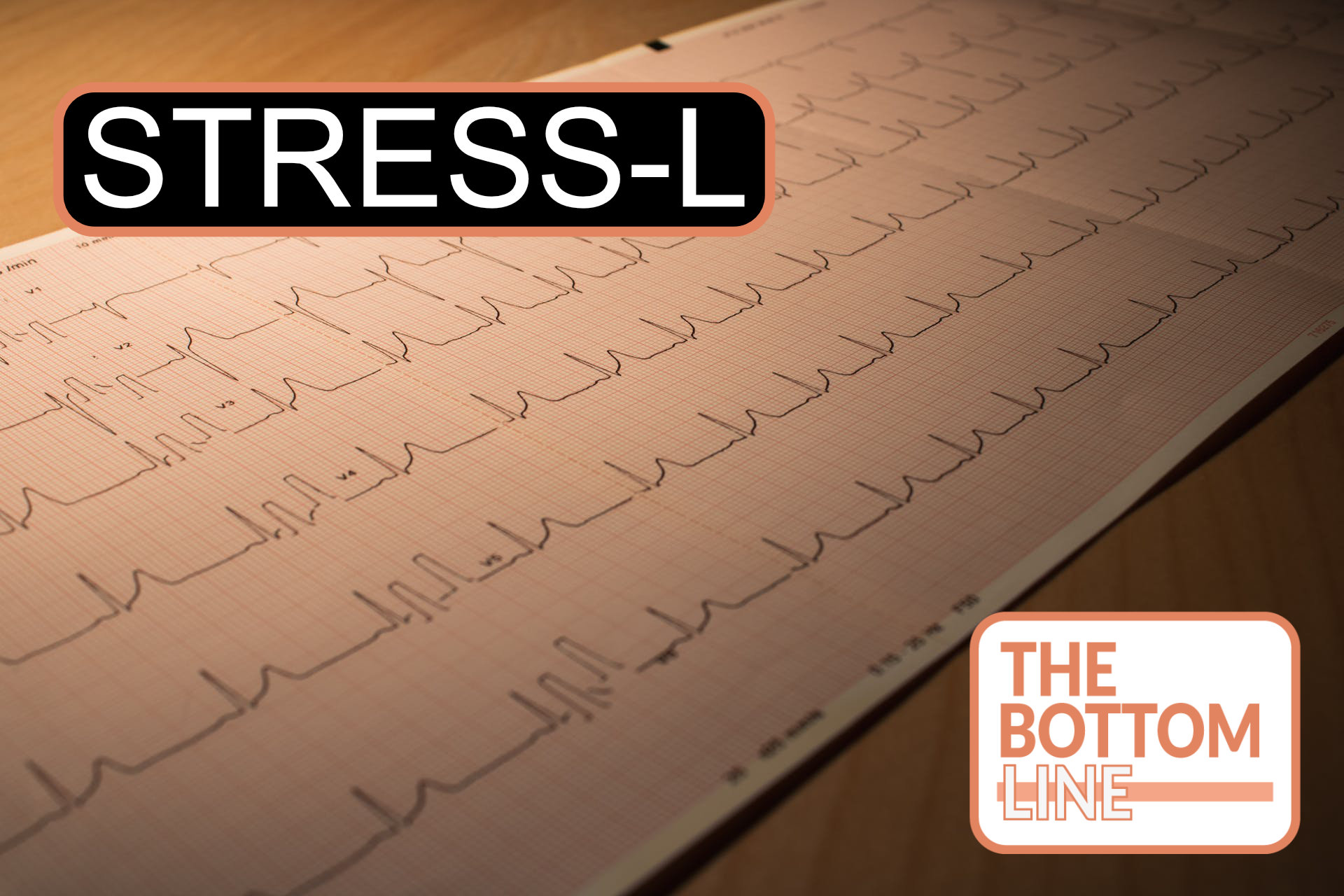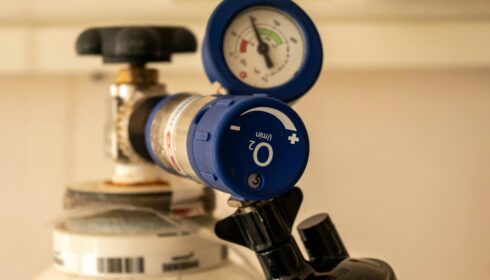STRESS-L: Landiolol and Organ Failure in Patients With Septic Shock

Landiolol and Organ Failure in Patients With Septic Shock
Whitehouse. JAMA Published online October 25, 2023. doi:10.1001/jama.2023.20134
Clinical Question
- In patients with tachycardia and septic shock who are treated with high dose norepinephrine does the use of β-blockade for up to 14 days reduce organ failure compared to standard care?
Background
- Many view the use of β-blockade as contentious in septic patients
- A meta-analysis has shown that ultra-short acting β-blockade reduced 28-day mortality in patients with sepsis and persistent tachycardia
- It is thought that tachycardia may be driven by sympathetic overstimulation
- This has multiple deleterious effects leading to impaired V-A coupling and worsening myocardial efficiency. These include:
- Reduced diastolic duration (which is important for ventricular filling alongside coronary perfusion)
- Increased myocardial oxygen demand and cardiac work leading to reduced myocardial performance (this may be exacerbated with the use of vasoconstrictors)
- Other potential beneficial effects may include immunomodulation – a reduction in production of proinflammatory cytokines has been shown in animals
- Landiolol is a very short acting β-blocker with ~8x the selectivity for β1 receptors (compared to esmolol)
- 80% of β-receptors in the heart are β1
Design
- Parallel group, investigator-initiated, multicenter RCT
- Open-label, phase 2b trial
- Investigators blinded to all data during trial
- Patients screened on initiation of norepinephrine to allow a 24-hour window for written consent
- Allocated 1:1 ratio using a computerized system
- Minimised by site and norepinephrine dose
- Interim analysis by data monitoring committee (DMC) every 3 months with no formal stopping rules (for either futility or benefit)
- Clear pre-specified adherence criteria
- Primary outcome was mean SOFA score over first 14 days following entry into trial and whilst in ICU
- Neurological domain not used due to sedation
- Planned sample size of 340 patients
- Based on mean SOFA score of 6.3 over first 14 days, and a predicted effect size of a 1-point difference between groups
- Trial terminated early by DMC as unlikely to demonstrate benefit and potential signal for harm
Setting
- 40 NHS hospitals in the UK
- April 2018 – December 2021
- Paused from March 2020 until August 2020 due to COVID-19
Population
- Inclusion:
- > 18 years old
- In ICU with septic shock (SEPSIS-3 criteria)
- > 0.1 mcg/kg/min norepinephrine for > 24 hours (< 72 hours)
- HR ≥ 95 bpm
- Exclusion:
- Tachycardia felt to be due to pain / discomfort
- Non-infective vasodilatory shock
- 4137 screened –> 348 eligible
- 126 randomised (222 declined participation)
- 63 to landiolol and 63 to standard care
- Comparing baseline characteristics of landiolol vs standard care groups
- Age: 55.9 vs 55.3
- Female: 41 vs 41%
- Source
- Pulmonary: 44.4 vs 42.9%
- Abdominal: 33.3 vs 34.9%
- Received β-blockers 2 weeks prior: 14.3 vs 16.7%
- Mean hydrocortisone equivalent dose: 170.6 mg in 33 patients vs 176.7 mg in 37 patients
- Mean HR: 110 vs 114
- Mean Norepinephrine dose: 0.37 vs 0.36 mcg/kg/min
- Mean SOFA score: 10.1 vs 10.3
Intervention
- Landiolol Infusion
- Started at 1mcg/kg/min and up titrated every 15 minutes in 1mcg/kg/min increments to achieve HR of 80 – 94 within 6 hours
- Dose reduced by the same decrement if HR < 80
- Weaned off once all vasopressors weaned off > 12 hours
- Median duration was 2 days (0.8 – 3.9)
Control
- No β-blockade
Management common to both groups
- Both groups received standard care based on SSC guidelines
Outcome
- Primary outcome (mean SOFA score):
- No difference
- Landiolol 8.8 (3.9) vs Standard Care 8.1 (3.2)
- Mean Difference 0.75 [95% CI -0.49 – 2.0, p = 0.24]
- Secondary outcomes:
- Comparing Landiolol vs. Standard Care group
- No significant difference in
- 28-day mortality
- 37.1% vs 25.4%
- OR 1.76 (95% CI 0.77 – 4.03, p = 0.18)
- 90-day mortality
- 43.5% vs 28.6%
- OR 2.04 (95% CI 0.91 – 4.57, p = 0.8)
- ICU or hospital LOS in survivors
- Mean Lactate, PaO2, PaCO2
- 28-day mortality
- Significantly increased in landiolol group
- Serious Adverse Events
- Landiolol 25.4% vs Standard Care 6.4% p =.006
- Average Norepinephrine Infusion Rate
- 0.34 vs 0.24 mcg/kg/min (Mean Difference 0.10 95% CI 0.002 – 0.20, p = .05)
- Serious Adverse Events
- Significantly reduced in landiolol group
- HR over 14 days
- 92.4 vs 98.6 (Mean Difference -6.46 95% CI -10.46 to -2.46, p = 0.02)
- HR over 14 days
- No significant difference in
- No differences in any subgroup (norepinephrine dose > 0.3 mcg/kg/min, ARDS or beta blocker use prior to randomisation)
Authors’ Conclusions
- In patients with septic shock and tachycardia an infusion of landiolol did not improve organ function, and the results do not support its use in the management of patients with tachycardia whilst receiving norepinephrine for septic shock
Strengths
- Randomised trial
- Screening log kept, and process to screen patients prior to meeting inclusion criteria to ensure timely randomisation sensible given need for written consent
- Clear guidelines to determine adherence to landiolol administration protocol
- Unwell patient cohort with high mean doses of norepinephrine and heart rates
- Pre-published protocol
- Intention to treat analysis
- Well balanced baseline characteristics
- Low rates of protocol not being followed (7.9%)
- This is impressive in a trial with an intervention requiring frequent titration of therapy in sick cohort in whom there are likely a lot of other competing management priorities
Weaknesses
- Open-label
- High rates screened but then not deemed eligible for “other” reasons (n = 1784, 47% of all those who were screened and excluded)
- Primary outcome
- Non-patient focused
- The authors acknowledge it doesn’t deal well with death or discharge from ICU (a discharged or dead patient will not have SOFA score recorded), however sensitivity analyses showed no difference
- This used a ranked composite of death and SOFA score
- No mandated cardiac monitoring or data collection on cardiac performance
- This could be used to identify sub-groups who may benefit (e.g. LVOT obstruction) or be harmed by the intervention (e.g. RV dysfunction)
- Early cessation may limit power to describe clinically important effects
The Bottom Line
- I will not be using ultra-short acting β1-blockade on septic patients with a noradrenaline requirement and tachycardia.
- The use of β-blockade in this setting should be confined to clinical trials
External Links
- article Landiolol and Organ Failure in Patients With Septic Shock The STRESS-L Randomized Clinical Trial
- Editorial
Metadata
Summary author: George Walker @hgmwalker89
Summary date: 27th October 2023
Peer-review editor: David Slessor
Picture by: Niklas Jeromin / Pexels



